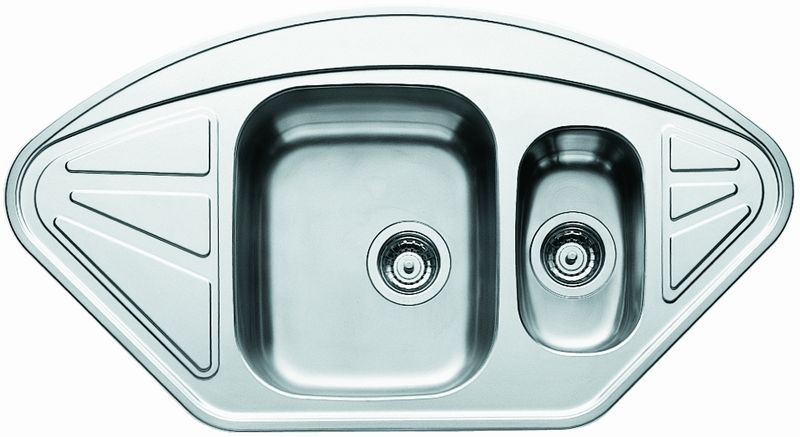Keeping Bacteria Off Surfaces
Interview with
Kat - Whether or not bacteria stick around in your local hospital isn't always down to local conditions or cleaning. Sometimes it's the microscopic structure of the surface you're cleaning that dictates whether you'll manage to get the bugs off. If we can understand better how bacteria stick to surfaces we could make food factories, bathrooms, kitchens and hospitals much cleaner. A team at Manchester Metropolitan University have been looking into this. Professor Joanna Verran joins us now. Hello. Why is a wipe down with a bit of bleach not enough to get rid of bacteria?
Joanna - I think if you think of the surfaces that you're wiping they may well not be particularly smooth so the bugs can get wedged in defects and scratches. It's not so easy to get them off that way.
Kat - These surfaces, how big are the scratches? Most surfaces look fairly smooth. What size are we talking about?
 Joanna - A typical bacterium, a cockle bacterium, is about 1µm (1000th of a millimetre). The sorts of scratches that we're looking at are around about that sort of size. Sometimes if the scratches are huge the bacteria come out fairly easily because they've got nowhere to stick. If they can wedge their little bums in the scratches then it means that they're holding on and it's harder to get them out.
Joanna - A typical bacterium, a cockle bacterium, is about 1µm (1000th of a millimetre). The sorts of scratches that we're looking at are around about that sort of size. Sometimes if the scratches are huge the bacteria come out fairly easily because they've got nowhere to stick. If they can wedge their little bums in the scratches then it means that they're holding on and it's harder to get them out.
Kat - Is there a difference in the types of surfaces? Surfaces can be made of all sorts of things. Are there any that are particularly hard for bacteria that you've found?
Joanna - I think softer surfaces, ones which scratch more easily are going to get more rough and therefore get harder to clean but hygienic surfaces like stainless steel are actually quite hard. They don't scratch particularly badly. What we've shown actually is if stainless steel surfaces wear it doesn't really make it harder to get the bugs off of those. Part of the problem with them as well is that food material and other material gets stuck in the cracks too. Again it helps the surfaces retain soil and that helps the bacteria stick to them. It's not just trying to get the bugs off, it's actually making sure that you get all the organic material off as well.
Kat - I know that one of the things you're really interested in is titanium. Tell me about titanium and how you're trying to use it to fight off bacteria.
Joanna - There's one aspect of titanium that is nanotitanium. This isn't so much on our hygienic surfaces but it's a photo-catalyst. As you've been talking about earlier with reactive molecules, nanotitanium is very small particles of titanium dioxide. When light shines on it, it activates the titanium dioxide and particles are released from the surface. These particles react with things like oxygen and form extra active super oxide molecules. They hit the bacteria and start to break down bacteria. These active molecules can also break down organic compounds as well so they are called photo-active surfaces, light activated.
Kat - So they're essentially self-cleaning?
Joanna - That's right. There are quite a few self-cleaning surfaces with nanotitanium in them already. There are glass and lots of ceramic tiles but we were looking at paint formulations particularly. We were interested in seeing whether we could get paint formulations that you could just paint indoors which would be activated by fluorescent light. We were looking at E. coli actually, Escherichia coli - not 0157.
Kat - I know that many paints already have titanium dioxide in. Is that special or do paints not normally work in this way?
Joanna - Titanium has got different functions. Some of the larger titanium particles are just pigment so it's white. Titanium dioxide is often used in paints and cosmetics, toothpastes but we're looking at the nanotitanium because those smaller molecules are better photo-catalysts.
Kat - Would that be very expensive though? It sounds like a fantastic idea if you can paint this paint indoors. It's activated by normal fluorescent lights. Is it going to be too pricy to be practical?
Joanna - I don't really know what the prices might be. We've started looking - we looked particularly as E. coli and the reason that we started with E. coli is because that's where standard tests for testing how good these antibacterial properties are. You would want to then look at other micro-organisms as well and see whether you've got a broader spectrum of activity. I'm afraid I don't know anything about the prices of them.
Kat - Brilliant, maybe that's something to look into.
- Previous The Problem with Clostridium difficile
- Next A Vaccine for MRSA









Comments
Add a comment